What does a #2 do?
…or “what do the numbers mean?”

Guards are a set of plastic combs which fit over a clipper’s cutting blades. Without a guard, the clippers will cut very close to the skin. The guards lift the blades over the skin so that they cut hair down to a specific length.
Generally speaking (the short answer), when a barber talks about a number on a “guard” or a “comb,” it means how much hair will be left on the head after running one’s clippers through it. The number usually means how many eighths of an inch will be left. For example, a #2 guard will leave 2/8 inch or 1/4 inch.
Here’s the long, detailed answer…
Guards (or Combs)
The most common guards that get requested in my chair are:
#2
For many men, this length is a starting point for short hairstyles. It can either be the beginning of a business or military cut, or the end of a faded cut.
#4
This guard leaves 4/8, or 1/2 inch on the head. I use this for many business haircuts, unless they want longer hair, in which case, I pretty much use shears. When a man wants short hair, but they don’t know how short they want it, I usually start with this guard and ask them if they like that length, or if they want to go shorter, and we take it from there.
No Guard
As the name implies, there is no guard on the clippers, so they are cutting very close to the skin. I usually see these on military-styled haircuts teens, and adults who either work outdoors or have a manager’s or an athlete’s presence.
Bonus… the half guard or #1.5 guard
Someone who requests me to one of these has usually had them used on their heads in the past and really likes the result. The dirty secret here is that these guards only cut 1/16th of an inch longer, yet at that length, the difference is noticeable, and can sometimes mean an extra week between haircuts. Most barbers, myself included, use these guards to help in faded and short tapered hairstyles, rather than a main measurement. However, I also know that when someone specifically asks for one of these guards to be used, they know exactly what they are looking for… and as a barber, that’s what I want to give them!
I said “generally speaking…” What I mean is that not all guards/combs fit the 1/8 inch metric… and sometimes, the barber is using blades instead of guards…
Blades

When a barber talks about blades, they are talking about a system where instead of putting different combs over a clipper’s cutting blade, the barber actually takes the blades off and replaces them with another blade which is design to cut hair to a specific length.
Most blades are measured in millimeters and often have the closest inch equivalent on the blade as well. However, they don’t always match up number-by-number. For example, if someone wants a #2 haircut, I usually start off with my 3 1/2 blade and then cut shorter if the customer wants it. Part of this is because of the number system used in blades, and the other is that the blades cut differently.
In my experience, the blades cut differently… I think I have found the reason why this happens. However, what I have noticed is that the hair lays down differently…
…so while my #2 guard and my #2 blade supposedly cut hair to the same length within a millimeter, the hair cut with the blade lays down “better” and looks and feels almost like I used a #1 guard.
Let me put it this way… every time a client has asked for a certain number guard, when I used the blade instead, the customer commented on how short the hair was. So now when the client asks for a certain number, if I choose to use blades instead of guards (depending on the haircut requested and the type of hair I am cutting), I use the next size up and the customer likes what they see and feel.
The most common blades I use are:
3/4 FC
Perfect example… this blade indicates a 13mm cut. 13mm equals 0.511811 inches… just over a half inch, or a #4 guard, mathematically. However, when I cut it, it looks like a #3… shorter. So I use this blade to clear hair out of the way so I can clearly see everything when I prepare to put in a taper or a fade, and it becomes a part of blending the hair for a smooth appearance at the top.
3 1/2
This is the most common blade I use, except when I am doing an actual fade. The number is just 1/4 lower than the previous blade, but it looks the same as a #2 guard, just smoother.
0A, 000, and 00000
Whenever someone says “no guard” to me, I tell them I can get right down to the skin to where only a razor gets any closer, and ask them how close to the skin they want to go.
This almost always prompts the question “what do you mean?”, to which I always respond that I want to ask questions before I start cutting.
I choose the blade based on their answer. If they say “Just no guard,” then I use the 0A, which looks like no guard has been used, and ask if they want to go shorter and go from there.
If they say to go as close as I can, I’ll use the 000 blade (0.5mm), and ask if they want to get right down to the skin. Half of my clients say that it’s close enough, that they like the stubble there.
For the other half that wants to go closer, I use my 00000 blade (0.1mm) and they love it.
The only way I can get closer than that is with a foil shaver and/or razor. Some barbers will use trimmers for a closer cut, but I’m not a big fan of that unless I am clearing the top of a head or doing detailed work.
 About Dave
About Dave
I am a barber in Marietta and the Cobb County area. I graduated from the Gwinnett Barber Institute and have been cutting hair since 2019.
Atlanta has always been my home, minus eight years when I was a Navy musician in Japan and Seattle.
When I am not cutting hair, I am usually found spending time with my family or at Atlanta United matches with the Terminus Legion in the supporters section.

